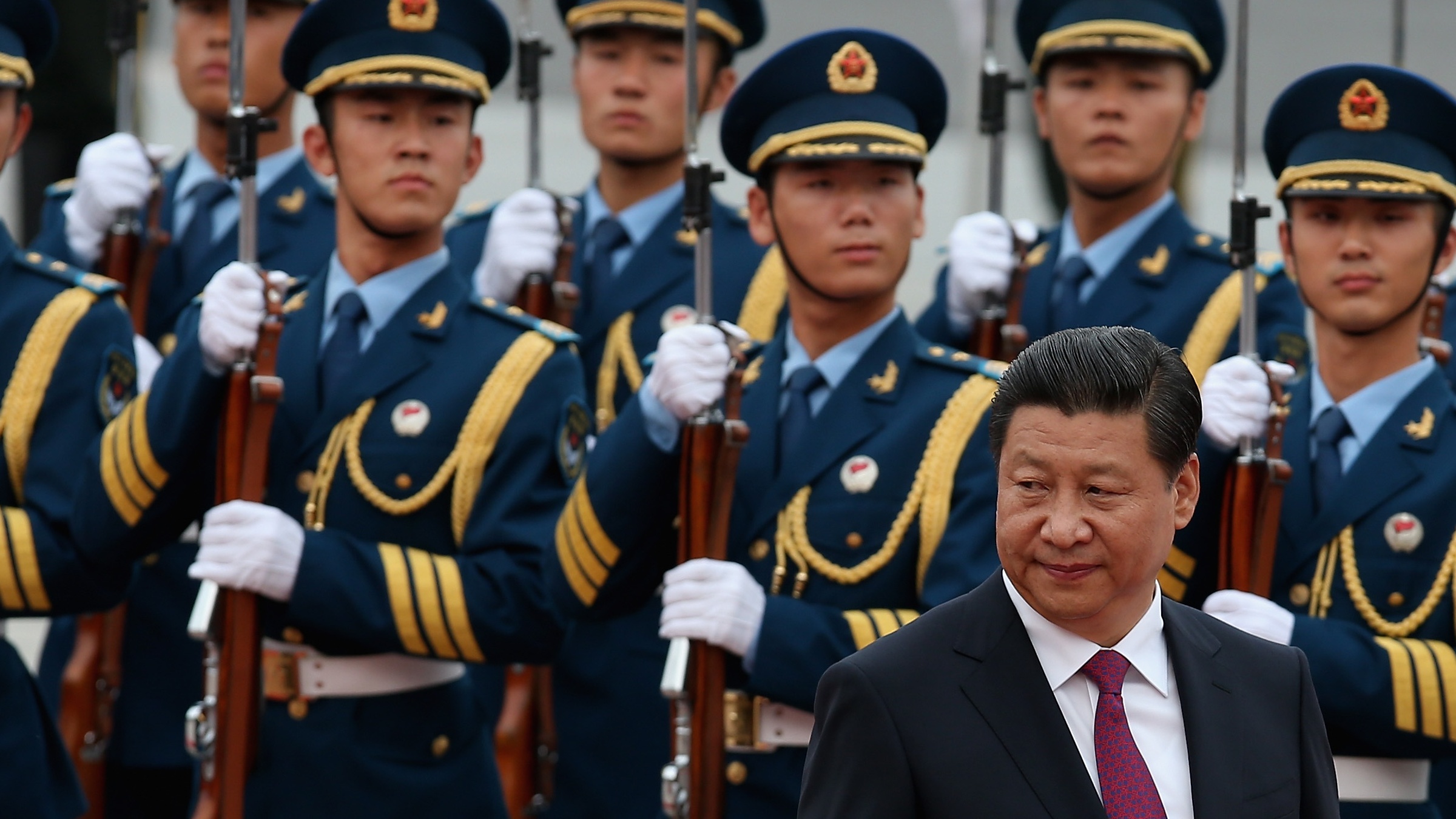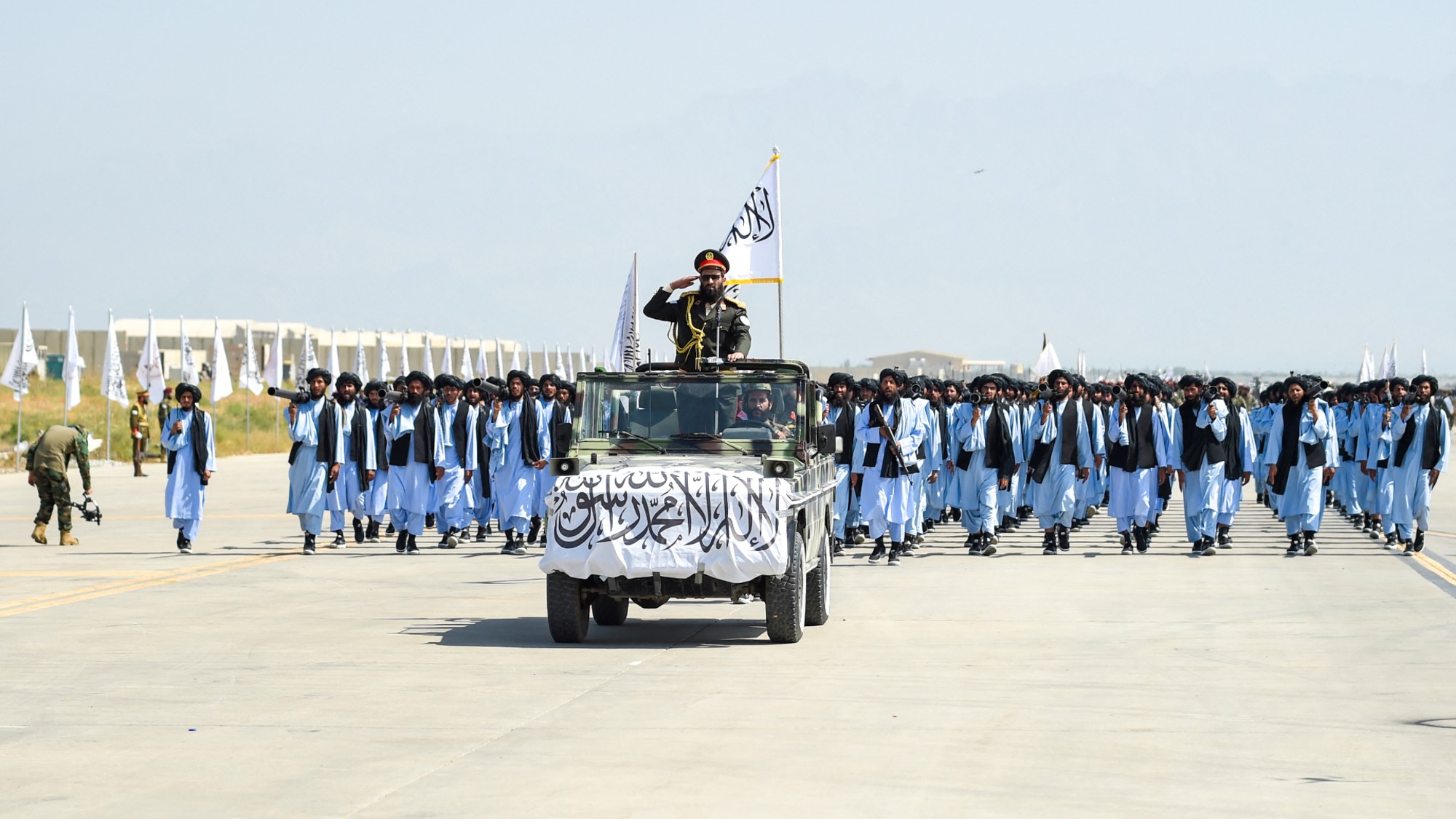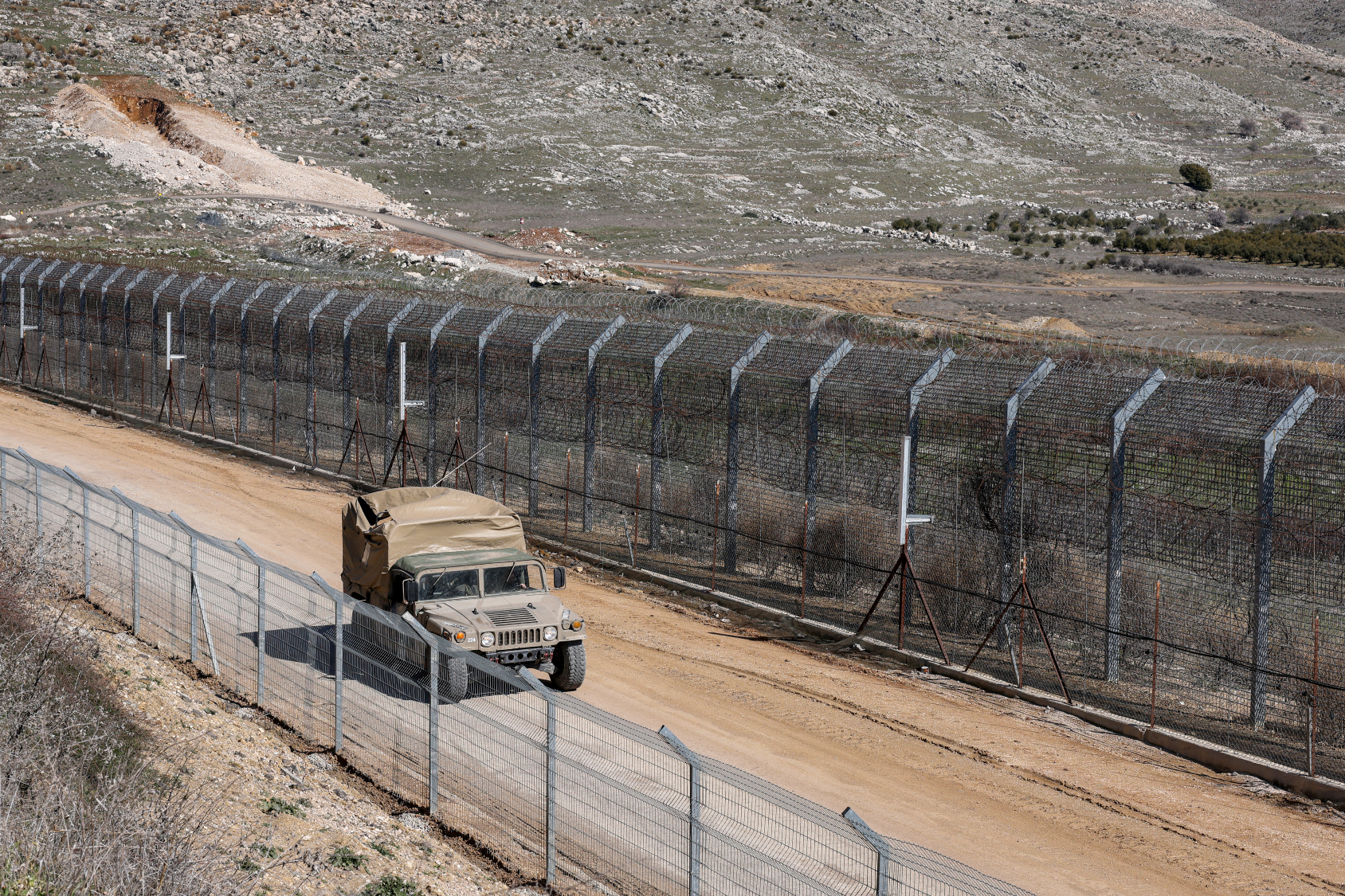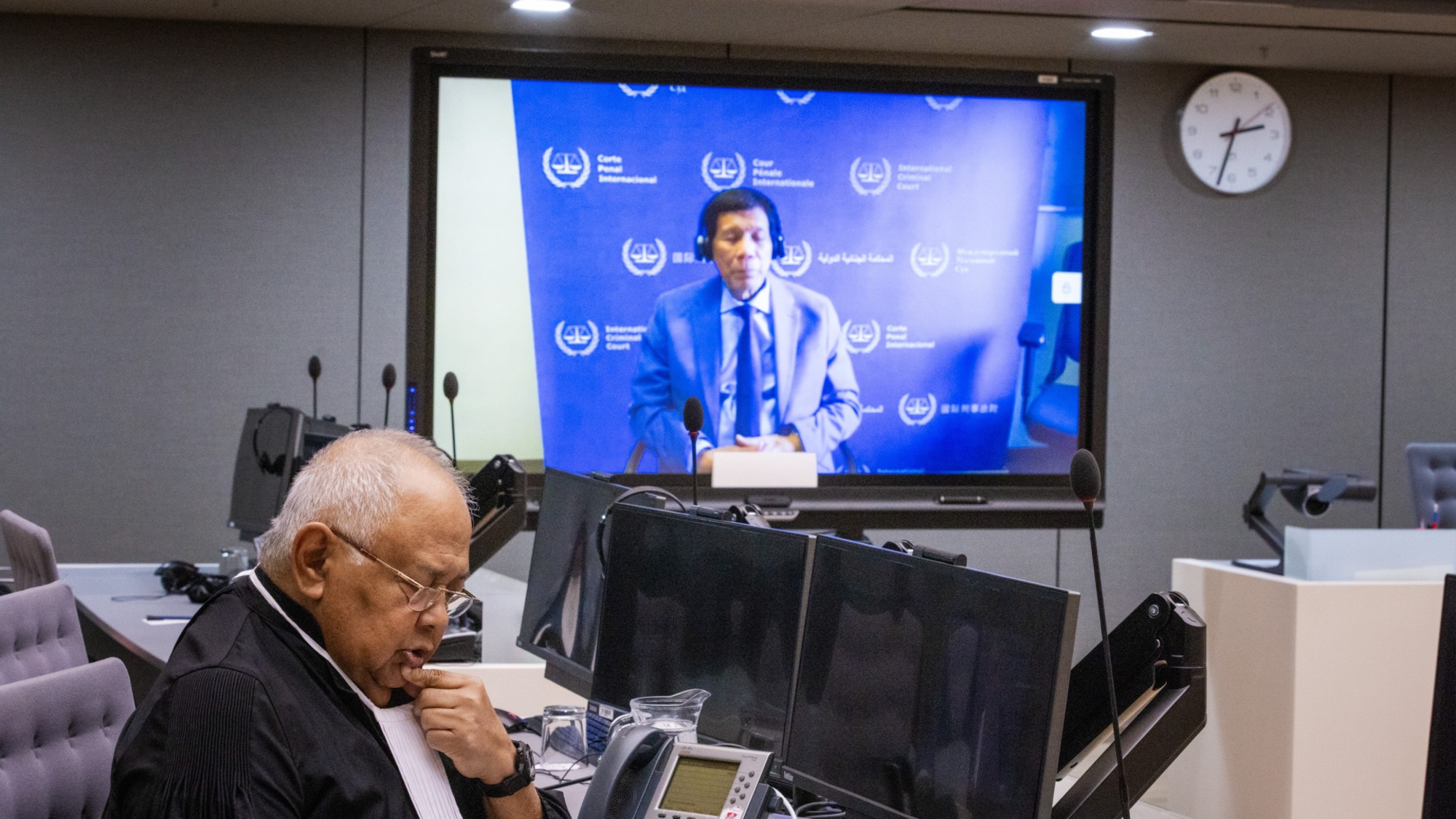All the countries in which China claims territory
Beijing is engaged in disputes with 17 nations over land and sea borders

Fears that China could launch an invasion of Taiwan have dominated headlines for months, fuelled by a series of incendiary interventions by senior officials in Beijing.
Concerns that China could order a strike on the self-ruling island are so high that the US has passed a $100m support contract aimed at “boosting the island’s missile defence systems” to maintain “political stability” and “military balance” in the region, Al Jazeera said.
The decision followed a warning by China’s ambassador to the US that the countries could descend into “military conflict” over the independence of the government in Taipei. But while Taiwan has proved to be the most troubling flashpoint in recent months, there are 16 other countries embroiled in territorial disputes with China.
Subscribe to The Week
Escape your echo chamber. Get the facts behind the news, plus analysis from multiple perspectives.

Sign up for The Week's Free Newsletters
From our morning news briefing to a weekly Good News Newsletter, get the best of The Week delivered directly to your inbox.
From our morning news briefing to a weekly Good News Newsletter, get the best of The Week delivered directly to your inbox.
1. The Philippines
Maritime
In November, Chinese vessels “blocked and used water cannons” on two Philippine supply boats that were “heading to a disputed shoal occupied by Filipino marines in the South China Sea”, The Guardian reported.
The hostility, which triggered “an angry protest from Manila”, was the latest flare-up in the South China Sea, with China claiming “virtually the entire waterway” and transforming “seven disputed shoals into missile-protected island bases”.
Manila is “facing a deadlock in a dispute it cannot resolve alone”, the International Crisis Group warned. And while “armed conflict directly involving the Philippines is unlikely”, there remains a “growing potential for incidents at sea to escalate”.
Sign up for Today's Best Articles in your inbox
A free daily email with the biggest news stories of the day – and the best features from TheWeek.com
2. Vietnam
Maritime
In another South China Sea dispute, China and Vietnam have long faced “maritime territorial disputes over the Spratly Islands and the Paracel Islands”, said the Carnegie Endowment for International Peace, a US-based think tank.
Despite efforts to resolve the issue through diplomacy, breakthroughs have proven “elusive”. “These disputes remain the main point of contention between Vietnam and China, and in many respects, they constitute a main driver of Vietnam’s foreign policy.”
3. Japan
Maritime
China and Japan have repeatedly clashed over a group of uninhabited islands called the Senkaku Islands in Tokyo, the Diaoyu Islands in Beijing and the Tiaoyutai Islands in Taiwan.
Beijing began raising the question of sovereignty over the islands in the the 1970s when evidence of oil reserves in the region surfaced. The area is also close to key shipping lanes and rich fishing grounds.
For some years, Beijing has “been aggravating tensions by increasing the presence of China Coast Guard vessels in the contiguous zone of the Senkaku/Diaoyu Islands”, The Diplomat said. Their presence is “irritating and appears threatening to Japan”, but “foreign ships sailing within the contiguous zone is not a violation of international law”.
4. Nepal
Land
Just this week China was accused of encroaching on Nepal’s territory along the two countries’ shared border. According to the BBC, a leaked government report is “the first time there have been official claims from Nepal of Chinese interference in its territory”.
The document claimed China has been trespassing in the district of Humla, in the far west of Nepal. The Chinese embassy in Kathmandu denies any encroachment.
It is “unclear why the report has not yet been published by the Nepalese government”, the BBC said. “But it has over recent years improved ties with China to counterbalance its long-standing relationship with India, its giant neighbour to the south.”
5. Bhutan
Land
China shares a contiguous border of 292 miles with Bhutan and territorial disputes have been a source of potential conflict. Since the 1980s, the two governments have conducted regular talks on border and security issues aimed at reducing tensions.
Last month Voice of America reported that Beijing had begun “construction of villages and settlements along its Himalayan borders”. Bhutan “has not responded to reports of the Chinese settlements along its border”.
6. India
Land
One of the disputes that has the potential to trigger a huge global fallout is China’s ongoing disagreement with India over its land border in the Himalayas.
“Thanks in part to slapdash colonial cartography, the boundary between India and China is undefined,” The Economist said. The countries fought a “bloody border war in 1962, ending in a ceasefire that established the Line of Actual Control”, Newsweek added.
In June 2020, soldiers clashed in hand-to-hand combat as a border dispute threatened the uneasy truce between the world’s most populous nations. The clashes were the first to result in fatalities in the border area in at least 45 years.
7. Indonesia
Maritime
Another South China Sea dispute. China has repeatedly demanded that Indonesia “halt an oil and natural gas” project in the region, Nikkei Asia said, claiming that the efforts to extract natural resources are an “infringement on its territorial waters”.
Drilling began last year “near the Natuna islands within Indonesia’s exclusive economic zone”, the site added. The area “overlaps China’s expansive ‘nine-dash line’ territorial claim covering much of the sea”.
8. Malaysia
Maritime
In June last year, Malaysia summoned China’s ambassador after 16 military aircraft flew over disputed waters off its eastern state of Sarawak. Malaysia’s foreign ministry said at the time that the manoeuvre was a “serious threat to national sovereignty”.
Over the last decade, Beijing has “adopted an increasingly assertive posture” towards Malaysia’s territory in the South China Sea, CNA, a US nonprofit research and analysis organisation, said.
“Since 2013 a Chinese Coast Guard ship has been stationed near Luconia Breakers”, an area about 80 nautical miles north of Sarawak.
9. Laos
Land
Laos has a 313-mile border with China that runs from the tripoint with Myanmar in the west to the tripoint with Vietnam in the east. Beijing “alleges that it owns large parts of Laos on historical precedent dating back to the Yuan Dynasty”, said The Print.
10. South Korea
Maritime
The Socotra Rock, which lies 4.6 metres below the surface of the Yellow Sea, is the subject of a territorial dispute between South Korea and China. Both claim that it falls within their exclusive economic zones. However, international maritime law stipulates that a submerged rock outside of a nation’s territorial sea – generally measured as 12 nautical miles – cannot be claimed as territory by any nation.
11. North Korea
Maritime
China-North Korea relations can be described as complicated at best. Their disagreements centre on 205 islands on the Yalu River, which runs on the border between the two nations.
A 1962 border treaty split the islands according to which ethnic group were living on each island. North Korea has 127 and China 78, but due to the division criteria, some islands belong to North Korea even though they are on the Chinese side of the river.
In the border region, an “uneasy alliance” persists, ABC News reported in 2019. But “a fear of war” lingers due to North Korea’s increasing nuclear capabilities. The two countries have “stood side by side for many decades”. However, “China is North Korea’s only remaining ally and never before has North Korea been such a threat”.
12. Mongolia
Land
In 2015, Chinese state media claimed that an attack on one of its remote checkpoints in Inner Mongolia was due to a “provincial border dispute”. The area in question is said to be claimed by both Inner Mongolians and residents of neighbouring Gansu province.
The BBC reported at the time that, according to the Global Times, there had been several clashes between Inner Mongolians and residents of Gansu province in the area. The region has also previously been the site of violent tensions between minority ethnic Mongolians and Han Chinese.
13. Myanmar
Land
In September, Radio Free Asia reported that residents of Myanmar’s northern Shan state had “destroyed a fence built by Chinese authorities”, claiming it “encroaches on their country’s territory”. At the time, experts said “that if the dispute goes unresolved it could seriously damage relations between communities living along the two nations’ shared border”.
At the time, the wall was often framed as an attempt by China “to keep dissidents from fleeing the country”, The Diplomat said.
But officials in Beijing have in fact “long been concerned that their nation’s porous borders” with Myanmar are facilitating “drug production and trafficking in all manner of contraband, as well as providing an outlet for illicit capital flows”.
14. Tibet
Land
Along with Taiwan, this is perhaps the most well-known of China’s territorial disputes.
In 1950, China enforced a long-held claim on the Himalayan country and incorporated it with its own territory. Following an unsuccessful uprising in 1959, Tibet’s spiritual leader, the Dalai Lama, fled to India, where he set up a government in exile.
15. Singapore
Maritime
Singapore has also clashed with China over its claims in the South China Sea. It particularly takes issue with the “building airstrips and hangars, as well as stationing anti-aircraft and anti-missile systems in the Spratly Islands”, Deutsche Welle said.
Speaking to the broadcaster in 2019, Defence Minister Ng Eng Hen said that he did not think “an all-out confrontation” involving Singapore “will take place”, explaining: “All the parties involved… recognize that the price is too high and the issues in the South China Sea do not warrant an actual physical confrontation.”
16. Brunei
Maritime
The small Islamic nation has long been described as the “silent claimant” to areas in the South China Sea owing to it keeping a low profile in major disputes.
It has been suggested that Beijing has “bought” its “silence” over territorial issues, The Diplomat said, due to “an influx of investment” that “coincided with the suppression of anything that might be deemed mildly critical of China”.
-
 What happens if tensions between India and Pakistan boil over?
What happens if tensions between India and Pakistan boil over?TODAY'S BIG QUESTION As the two nuclear-armed neighbors rattle their sabers in the wake of a terrorist attack on the contested Kashmir region, experts worry that the worst might be yet to come
-
 Why Russia removed the Taliban's terrorist designation
Why Russia removed the Taliban's terrorist designationThe Explainer Russia had designated the Taliban as a terrorist group over 20 years ago
-
 China accuses NSA of Winter Games cyberattacks
China accuses NSA of Winter Games cyberattacksspeed read China alleges that the U.S. National Security Agency launched cyberattacks during the Asian Winter Games in February
-
 Inside the Israel-Turkey geopolitical dance across Syria
Inside the Israel-Turkey geopolitical dance across SyriaTHE EXPLAINER As Syria struggles in the wake of the Assad regime's collapse, its neighbors are carefully coordinating to avoid potential military confrontations
-
 'Like a sound from hell': Serbia and sonic weapons
'Like a sound from hell': Serbia and sonic weaponsThe Explainer Half a million people sign petition alleging Serbian police used an illegal 'sound cannon' to disrupt anti-government protests
-
 The arrest of the Philippines' former president leaves the country's drug war in disarray
The arrest of the Philippines' former president leaves the country's drug war in disarrayIn the Spotlight Rodrigo Duterte was arrested by the ICC earlier this month
-
 Ukrainian election: who could replace Zelenskyy?
Ukrainian election: who could replace Zelenskyy?The Explainer Donald Trump's 'dictator' jibe raises pressure on Ukraine to the polls while the country is under martial law
-
 Why Serbian protesters set off smoke bombs in parliament
Why Serbian protesters set off smoke bombs in parliamentTHE EXPLAINER Ongoing anti-corruption protests erupted into full view this week as Serbian protesters threw the country's legislature into chaos


